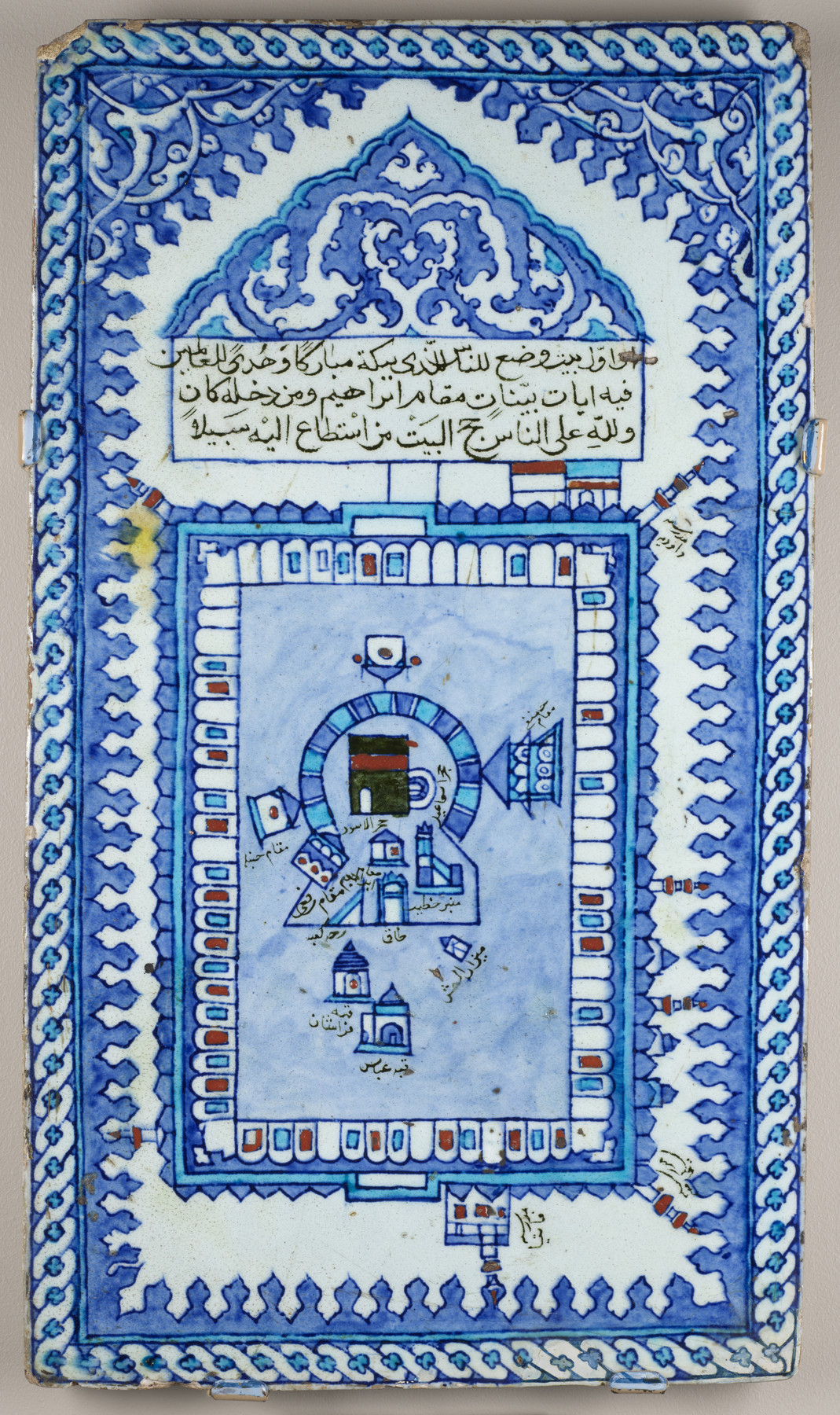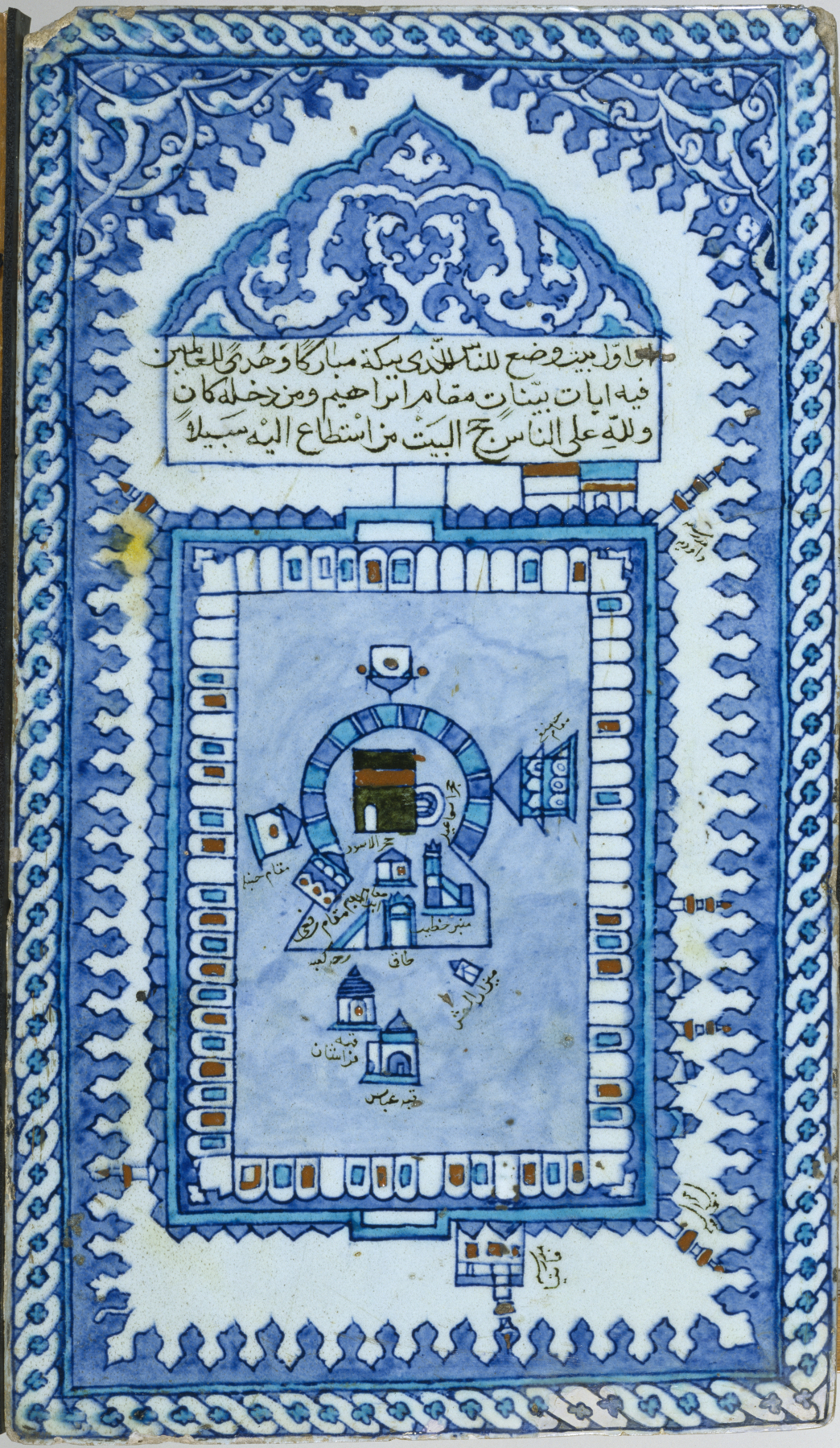Tile with the Great Mosque of Mecca
(Islamic World )
The Arabic writing in the upper part of this plaque is from the Qur’an and encourages Muslims to make the hajj—the pilgrimage to Mecca, birthplace of the Prophet Muhammad and the spiritual center of the Islamic world. Beneath the inscription is a representation of the Great Mosque in Mecca, surrounded by a rectangular portico. At center is the Ka‘ba, Islam’s most sacred shrine and the place to which Muslims pray. In Mecca, pilgrims walk around the Ka‘ba as part of the hajj ritual. Tiles such as this one may have been created to remind Muslims of their obligation to make the pilgrimage and introduce potential hajji, or pilgrims, to the places and practices they would encounter. It also could have functioned as commemorative plaques for contemplation following a hajji’s experience at the Ka‘ba.
Inscription
Provenance
Provenance (from the French provenir, 'to come from/forth') is the chronology of the ownership, custody, or location of a historical object. Learn more about provenance at the Walters.
Dikran Kelekian, Constantinople, Paris, and New York, by 1897, [mode of acquisition unknown]; Henry Walters, Baltimore, 1897, by purchase; Walters Art Museum, 1931, by bequest.
Exhibitions
| 2007-2008 | Maps: Finding Our Place in the World. The Field Museum, Chicago; The Walters Art Museum, Baltimore. |
| 1998-2001 | Highlights from the Collection. The Walters Art Gallery, Baltimore. |
| 1997 | The Divine Word and Sacred Sites of Islam. The Walters Art Gallery, Baltimore. |
Geographies
Turkey (Iznik) (Place of Origin)
Measurements
H: 24 9/16 x W: 14 1/8 x D: 1 3/8 in. (62.4 x 35.8 x 3.5 cm)
Credit Line
Acquired by Henry Walters, 1897
Accession Number
In libraries, galleries, museums, and archives, an accession number is a unique identifier assigned to each object in the collection.
In libraries, galleries, museums, and archives, an accession number is a unique identifier assigned to each object in the collection.
48.1307




